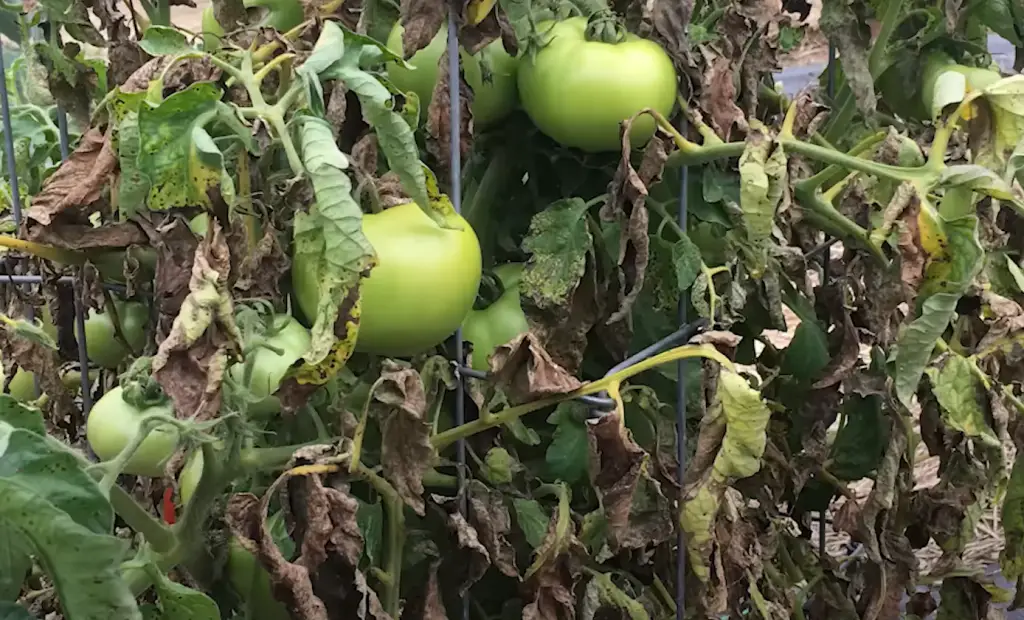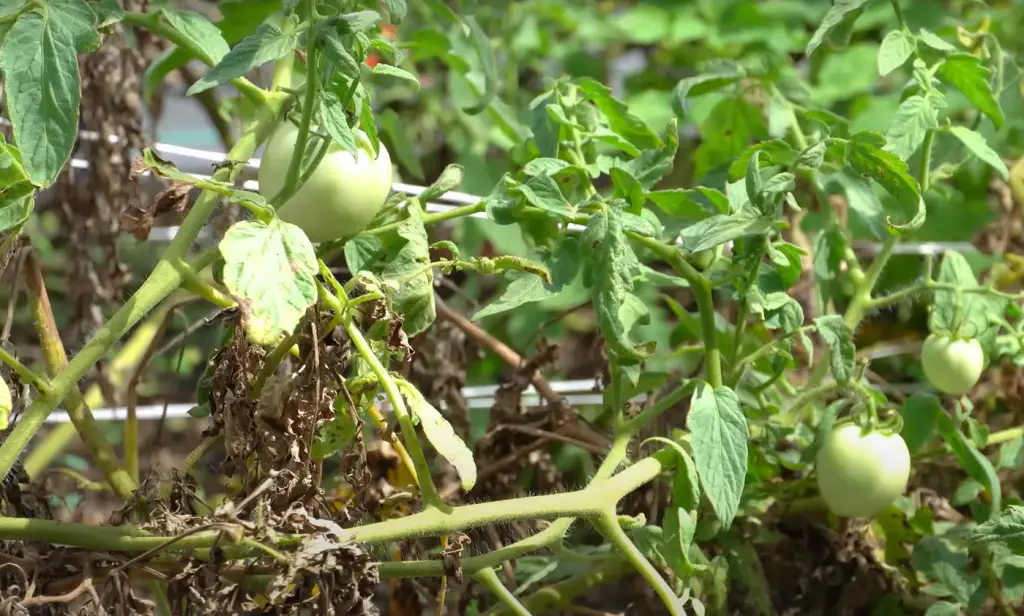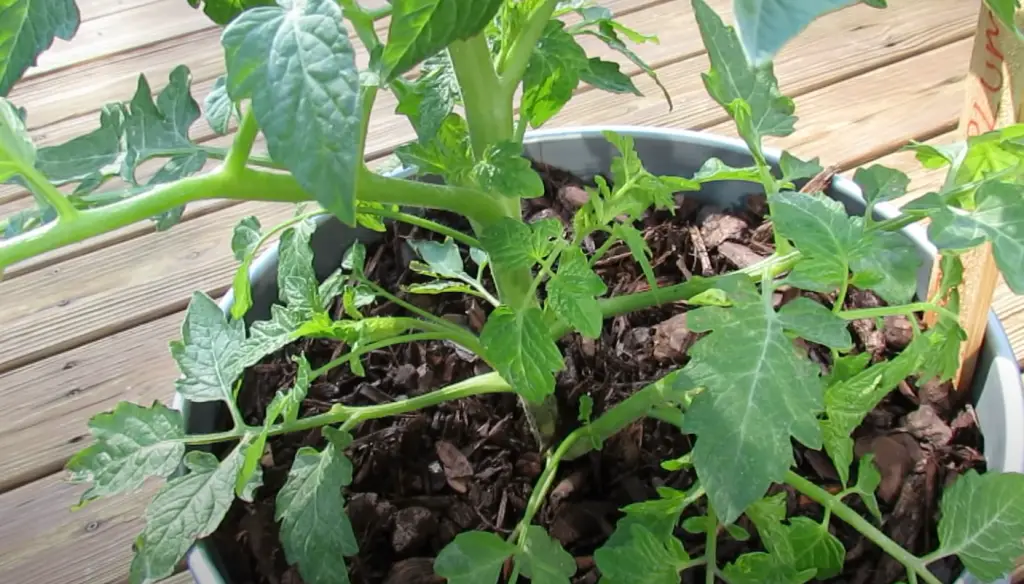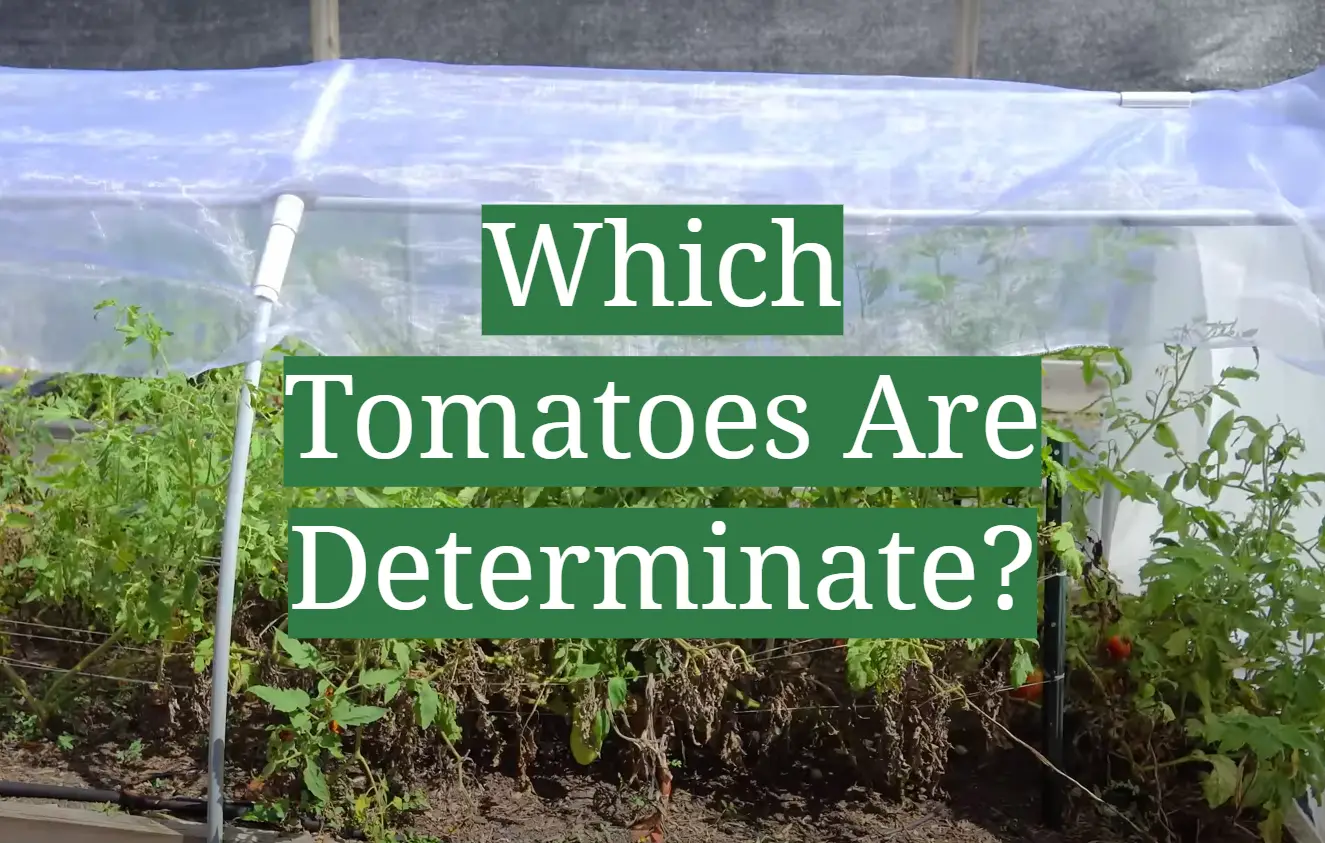If you want to add some great veggies to your garden this season, then tomatoes should be at the top of your list. But before you decide which type of tomato to plant, it’s important to do a bit of research into their variety types – particularly their classification as determinate or indeterminate. Determinate Tomatoes are those that have been bred and developed in such a way that they only produce fruit once during each growing season. Unlike Indeterminates, they don’t continue bearing fruit until frost arrives. So what makes these tomatoes different from their indeterminate relatives? And why are so many people choosing to grow them in their vegetable gardens? Keep reading below for all the answers and more details on whether determinant tomatoes really are worth planting!
What Vegetables Should Be Planted in the Garden?
When planting your garden, it’s important to choose vegetables that are suitable for your climate and the space you have available.
Depending on where you live and the types of soil you have in your garden area, additional vegetables may be suitable to plant as well. For example, if you live in a warmer climate with sandy soil then eggplant or okra might do well in your garden. If you live in a cooler climate with heavier soils then root crops such as turnips or beets can thrive there. Many regions also have specific native species of vegetables that are well-suited for the local area, so be sure to research these options before planting. [1]
When choosing vegetables for your garden, it is also important to consider how much time and effort you have available to maintain the plot. Some vegetables require more intensive care than others, such as tomatoes which need regular pruning and staking in order to reach their full potential. Other vegetables, such as lettuce or kale, may only need a few minutes of weeding once a week. Consider this when selecting what to plant in order to ensure that your garden is manageable for you.
Finally, don’t forget about herbs! Herbs can be a great addition to any home garden as they are easy to grow and can add flavor and depth to your dishes. Popular herbs for a home garden include basil, oregano, thyme, rosemary, chives and mint.
By taking the time to research which vegetables are best for your climate and available resources, you can enjoy a thriving vegetable garden that produces delicious and nutritious crops. With careful planning and regular maintenance you can have an abundant harvest of fresh veggies in no time. [2]
What Types of Tomatoes Are Available?
Tomatoes come in many different shapes, sizes, and varieties. Some of the most popular types are cherry tomatoes, beefsteak tomatoes, plum tomatoes (also known as Roma tomatoes), heirloom tomatoes, sungold tomatoes, and green tomatoes. Each type has its own unique flavor and texture that makes them ideal for different recipes and uses.
- Cherry tomatoes are small and sweet, making them great for snacking or adding to salads.
- Beefsteak tomatoes are large and juicy, perfect for burgers or sandwiches.
- Plum tomatoes are oval-shaped and have a firm texture, which makes them ideal for cooking sauces or canning.
- Heirloom tomatoes have a rich flavor that makes them a favorite among cooks who want to add something special to their dishes.
- Sungolds are bright orange cherry-sized fruits with a sweet taste that is delicious when roasted or eaten raw.
- Lastly, green tomatoes can be fried or pickled and added to salads for a unique flavor. [3]
What is a Determinate Tomato Plant?
A determinate tomato plant is a type of tomato plant that has a predetermined size and usually reaches its full potential within a season. The plants are bush-like in form, with branches that have short internodes (the space between two leaves or buds on the same branch). They typically produce fruit all at once, allowing for easy harvesting as they do not require pruning or training to support their structure. Determinate tomato varieties are typically smaller than indeterminate ones, producing fewer fruits overall but maturing earlier in the season.

Popular determinate varieties include Roma, Celebrity. These tomatoes are ideal for small gardens as well as container gardening since they take up less room and don’t require much care beyond watering and occasional fertilizing. Determinate tomatoes are also great for canning and preserving as you can take advantage of harvesting a large crop all at once. While determinate tomato plants usually reach a maximum size, in some cases they can become leggy or outgrow their space if not pruned. Additionally, they may require staking or support to keep the stems upright when heavy with fruit. Regardless, determinate tomatoes are considered to be easier to care for than indeterminate varieties due to their smaller size and predictable growth pattern. [4]
Which Tomato Varieties Are Determinate?
Determinate tomatoes are an excellent choice for home gardens. There are many varieties of determinate tomatoes available, each with its own unique characteristics and performance. Here is a selection of some popular determinate tomato varieties to get you started:
- Roma – Roma tomatoes are the classic Italian plum tomato, often used in sauces or paste. It has an oval shape and thick walls, giving it excellent holding power during cooking processes. It’s brilliant red color makes it an attractive garnish as well.
- Celebrity – This popular variety produces large, globe-shaped red tomatoes that can reach up to 10 ounces in weight. It has an excellent flavor and texture perfect for salads or sandwiches. Celebrity tomatoes are also very resistant to cracking and splitting.
- Mountain Pride – Mountain Pride tomatoes are large with firm flesh and a bright red color. It is an early-maturing variety that produces big yields of fruits in just 65 days. Perfect for canning or slicing fresh.
- New Yorker – New Yorker tomatoes are large and juicy, weighing up to 10 ounces each. Its flavor is sweet and mild making it a great choice for sandwiches or tomato salads. A vigorous grower that yields big crops of shiny red fruits in just 70 days.
- Patio – Patio tomatoes are the perfect variety if you’re looking for an attractive container plant with abundant production. It has a compact habit as well as small, round cherry-type fruits that average one ounce in size. The fruits are sweet and juicy, making them perfect for salads.
- Tumbling Tom Red – This variety produces abundant clusters of round 1-inch red tomatoes that can be harvested throughout the summer season. Its determinate habit makes it an ideal choice for hanging baskets or window boxes. The flavor is sweet and juicy, perfect for snacking on or adding to pasta dishes. [5]
No matter which variety you choose, determinate tomatoes offer a great deal of versatility and performance to the home gardener. Whether you are looking for a tomato to make sauces or eat fresh off the vine, there is likely a determinate tomato that will fit your needs perfectly!
How to Grow a Determinate Tomato Plant?
- Choose a well-drained spot in your garden that receives at least 6 hours of direct sunlight each day. If you don’t have a suitable outdoor space, you can also grow determinate tomatoes in containers.
- Prepare the soil by tilling it to a depth of 8–10 inches and adding plenty of organic matter such as composted manure, leaf mold or aged straw. This will help improve drainage and provide nutrients for your plants.
- Plant your determinate tomato seedlings after all danger of frost has passed and the soil temperature has risen above 55°F (13°C). Space them 18–24 inches apart with 3 feet between rows for optimal air circulation.
- Stake your plants with sturdy tomato cages or bamboo canes soon after planting to provide support and prevent the fruits from touching the ground.
- Water regularly, making sure to keep the soil evenly moist but not soggy. Mulch around your plants to maintain moisture levels and reduce weeds.
- Pinch off any suckers that appear between the main stem and branches of your determinate tomatoes. This will help direct energy into producing bigger fruit rather than many small ones.
- Harvest your ripe tomatoes when they become deep red in color and easily pull away from their stems – usually 60–90 days after planting depending on the variety you’re growing. [6]
What is a Non-Determinate Tomato?
Non-determinate tomatoes, sometimes referred to as “vining” or “indeterminate” varieties of tomato plants, are characterized by their fast-growing vines that keep growing until the end of the season. Generally, these types of tomato plants require staking or caging and benefit from pruning and training for best results.

Non-determinate tomatoes tend to bear fruits throughout the season with harvest continuing through late summer and early fall. While these varieties will not produce a large yield in a short period of time like determinate varieties, they can offer an extended harvest window which is beneficial to those who want fresh tomatoes through much of the summer months. [7]
Which Tomato Varieties are Non-Determinate?
- Big Boy – As the name implies, this variety produces large, round fruits that can reach up to 12 ounces in weight. Its juicy flesh makes it a great choice for eating fresh off the vine and its disease resistance makes it ideal for long-term storage.
- San Marzano – This Italian heirloom tomato is considered the best type of plum tomato for sauces and paste due to its intense flavor. San Marzano tomatoes have thick walls and few seeds making them ideal for long cooking processes.
- Better Boy – These tomatoes are large, round red fruits that can reach up to 16 ounces in weight. Its deep, rich flavor and heavy yields make it an excellent choice for home gardeners. It has excellent disease resistance and is tolerant of cold weather.
- Rutgers – This tomato variety produces round red fruits that can reach up to 8 ounces in weight. Rutgers tomatoes have a firm texture and sweet flavor, making them perfect for salads or sauces. [8]
How to Grow a Non-Determinate Tomato?
Growing a non-determinate tomato plant can be a fun and rewarding experience. Non-determinate tomatoes are characterized by their ability to grow tall and produce fruit throughout the growing season, rather than producing all of their fruit in one big harvest. To get started, you’ll need the right type of soil, plenty of sunlight, and adequate water and nutrients.
- The first step is to prepare the soil. Tomatoes prefer slightly acidic soil with a pH level between 6.0 – 6.8.
- The next step is to add some organic matter such as compost or manure for extra nutrition and drainage. Work it into the soil using a rake or shovel until it’s evenly distributed throughout your garden bed.
- Next, you’ll want to get your seedlings. Make sure to choose the right variety of non-determinate tomato for your area and growing conditions. Plant the seedlings at least 12 inches apart in rows, burying them so that their stems are about 2 inches below the soil line. Water the plants thoroughly after planting and continue to water regularly during dry periods.
- To ensure a good harvest, make sure your tomatoes get plenty of sunlight each day, and prune away any diseased or damaged leaves or branches as needed. Keep an eye out for pests such as aphids or whiteflies, which can be treated with natural methods such as neem oil or insecticidal soap. Lastly, add mulch around the base of the plants to help retain moisture and keep weeds away. [9]

By following these steps, you should have a healthy crop of non-determinate tomatoes in no time!
Tips for Caring for Tomatoes
- Plant at the Right Time: When conditions are right, timing is everything. Plant your tomatoes when there is no risk of frost and temperatures are above 60°F (16°C). In most areas, this means planting after the last frost date in spring.
- Provide Support: Growing tomatoes on a support system will help keep them off the ground and reduce rotting from soil-borne diseases. Stakes, cages, or trellises can be used to help train strong stems that will bear heavy fruits over time.
- Water Regularly: Tomatoes need regular moisture, especially during fruiting season when they really need it most. During dry spells, pay extra attention to watering to keep plants healthy.
- Feed Your Plants: Tomatoes love fertilizer to get them through their long growing season, so be sure to feed your plants with a balanced fertilizer when they are blooming or in the early fruiting stages.
- Prune and Stake Early: If you want healthy tomatoes, it is important to prune and stake them early on in the season. When dealing with indeterminate varieties of tomatoes, it’s especially important to remove suckers and weak stems as soon as possible before they become unmanageable and start competing for resources.
- Protect from Pests: Keep an eye out for pests such as aphids, tomato hornworms, and slugs that can easily ruin your tomatoes. Use physical barriers such as nets and organic sprays to keep them at bay.
- Harvest Early and Often: As soon as your tomatoes begin to turn color, start harvesting regularly to encourage more fruit production from the plant. Tomatoes are best when harvested at peak ripeness—not too hard, not too soft!
- Enjoy Your Fruits of Labor: Once you have successfully grown a few healthy tomatoes, enjoy the fruits of your labor by adding some freshness to salads, sandwiches, soups or sauces. There’s nothing better than growing and eating your own homegrown produce. [10]
FAQs
How can you tell if tomatoes are determinate or indeterminate?
The easiest way to tell if tomatoes are determinate or indeterminate is by looking at the plant size and shape. Determinate tomato plants tend to be bushier, shorter, and more compact than indeterminate varieties.
Additionally, many seed packets will indicate whether a variety is determinate or indeterminate. It may also be helpful to ask knowledgeable gardeners or staff at your local nursery for advice on which type you should choose for your particular needs.What are the most common determinate tomatoes?
The most common determinate tomatoes are Roma, Celebrity, Mountain Pride, New Yorker, Patio. These tomatoes are all popular varieties that produce medium-sized fruit that ripens in clusters, perfect for canning and sauces. Roma tomatoes have a classic tomato flavor, while Celebrity has a sweet taste with low acidity.

Mountain Pride is an early season producer of large cherry tomatoes. New Yorker gives you big yields of flavorful beefsteak tomatoes, and Patio is excellent for containers or small gardens with its compact size and high yield potential. All these determinants will give you great results if given the right care! With proper pruning, watering, fertilizing, and staking they should provide a delicious harvest throughout the growing season.
Are most tomatoes determinate or indeterminate?
Most tomatoes are indeterminate, meaning they keep growing and producing fruit for an extended period of time. Determinate varieties are usually smaller in size, ripen all their fruit at once, and then stop growing. Many gardeners prefer to grow determinate types for canning and preserving because all the tomatoes can be harvested at one time. However, indeterminate varieties tend to produce more fruit over a longer season. In addition, some types have specific growth habits that make them better suited for particular climates or soils.
Why determinate tomatoes are better?
Tomatoes that are determinate have a much more concentrated flavor, they offer a better yield due to the fact that the plant stops growing once it produces its crop of tomatoes, and they require less maintenance.

The plants themselves grow in a bush-like form and do not need staking for support like indeterminate varieties do. These tomato plants can be grown in containers or in gardens and will only reach a certain size. This is great because it takes up much less space than an indeterminate variety would.
Useful Video: 4 LIES You Believe About Determinate Tomatoes: Everything You Know Is WRONG
Final Thoughts
All in all, determinant tomatoes are a great choice for gardeners of all skill levels. The ease of cultivation, combined with the fact that they serve many purposes, makes determinant tomatoes an ideal way to start a garden. From novice gardeners to experienced green thumbs – determinant tomatoes can be used to create delicious foods or vibrant outdoor décor! For those who want to harness the gardening potential of determinant tomatoes, they offer an exciting challenge that can be rewarding and fun. So why not give them a try and let those luscious tomatoes bring your outdoor spaces and meals alive!
References:
- https://www.almanac.com/content/10-easy-vegetables-grow-seed
- https://www.bhg.com/gardening/vegetable/vegetables/when-to-plant-vegetables/
- https://www.grow-it-organically.com/tomato-varieties.html
- https://www.thespruce.com/indeterminate-tomato-variety-1403423
- https://gardeninghood.com/which-tomatoes-are-determinate/
- https://thegardeningcook.com/determinate-tomato-plant/
- https://www.finegardening.com/article/should-you-grow-determinate-or-indeterminate-tomato-plants
- https://www.gardeningchores.com/indeterminate-tomato-varieties/
- https://minnetonkaorchards.com/determinate-vs-indeterminate-tomatoes/
- https://www.charliecarp.com.au/news/8-tips-on-how-to-grow-great-tomatoes/










Leave a Reply
View Comments